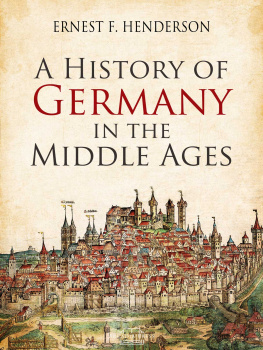Contents
Guide
Australia
HarperCollins Publishers Australia Pty. Ltd.
Level 13, 201 Elizabeth Street
Sydney, NSW 2000, Australia
www.harpercollins.com.au
Canada
HarperCollins Canada
2 Bloor Street East - 20th Floor
Toronto, ON M4W 1A8, Canada
www.harpercollins.ca
New Zealand
HarperCollins Publishers New Zealand
Unit D1, 63 Apollo Drive
Rosedale 0632
Auckland, New Zealand
www.harpercollins.co.nz
United Kingdom
HarperCollins Publishers Ltd.
1 London Bridge Street
London SE1 9GF, UK
www.harpercollins.co.uk
United States
HarperCollins Publishers Inc.
195 Broadway
New York, NY 10007
www.harpercollins.com
BRUCE HENDERSON has written more than twenty books, including the #1 New York Times bestseller And the Sea Will Tell, the national bestseller Hero Found: The Greatest POW Escape of the Vietnam War, and Rescue at Los Baos: The Most Daring Prison Camp Raid of World War II. An award-winning journalist and author, he has taught writing and reporting at USC School of Journalism and Stanford University. He lives in Menlo Park, California.
Discover great authors, exclusive offers, and more at hc.com.
Rescue at Los Baos: The Most Daring Prison Camp Raid of World War II
Hero Found: The Greatest POW Escape of the Vietnam War
Down to the Sea: An Epic Story of Naval Disaster and Heroism in World War II
And the Sea Will Tell (with Vincent Bugliosi)
Fatal North: Murder and Survival on the First North Pole Expedition
Trace Evidence: The Hunt for the I-5 Serial Killer
True North: Peary, Cook, and the Race to the Pole
Ring of Deceit: Inside the Biggest Sports and Banking Scandal in History

SONS AND SOLDIERS. Copyright 2017 by Bruce Henderson. All rights reserved under International and Pan-American Copyright Conventions. By payment of the required fees, you have been granted the nonexclusive, nontransferable right to access and read the text of this e-book on-screen. No part of this text may be reproduced, transmitted, downloaded, decompiled, reverse-engineered, or stored in or introduced into any information storage and retrieval system, in any form or by any means, whether electronic or mechanical, now known or hereafter invented, without the express written permission of HarperCollins e-books.
FIRST EDITION
Cover design by Mumtaz Mustafa
Cover photographs: Stephen Mulcahey/Arcangel (sky); SZ Photo/Scherl/Bridgeman Images (men)
ISBN 978-0-06-241909-5 (Hardcover)
ISBN 978-0-06-280384-9 (International Trade Paperback Edition)
EPub Edition July 2017 ISBN 978-0-06-241911-8
Version 09142017
For them all
When Hitler came to power in Germany in 1933, he declared war on his countrys half million Jewish citizens. They were stripped of their most basic rights. Judaism was defined as a race, not a religion, and Jews were excluded from German citizenship. Restrictive edicts put in place by the Nazis affected Jews of all ages and in all walks of life, and even Jewish children were forced out of public schools. A harsh reality for German Jews was the growing realization that neither they nor their children had a future in the country. This fear culminated in November 1938 with Kristallnacht, known as the Night of Broken Glass, when Jewish homes, businesses, and synagogues were ransacked by Nazis. Nearly a hundred Jews were killed that night, and up to thirty thousand were arrested and sent to concentration camps, where hundreds of them died within weeks of their arrival. Though by then tens of thousands of German Jews had already immigrated to the United States, this was the final confirmation anyone required that Germany was no longer safe for Jews.
But departing meant leaving behind their ancestral home, relatives, friends, and life savings, and there was no guarantee they would be able to get past restrictive U.S. immigration quotas, and those in other countries, which made it difficult for more Jews to immigrate.
It was often impossible for an entire family to get out of Germany, and many faced an excruciating decision of splitting up, perhaps forever, when parents discovered they could get only one child, under age sixteen, to safety through the efforts of Jewish relief organizations in America and England. Who went and who stayed often meant the difference between life and death. By the time Germany went to war with the United States in 1941, the Nazis determination to create an Aryan Germany had switched from a policy of forced Jewish emigration to one of mass annihilation of those Jews still in the country and the millions of other Jews trapped in Nazi-occupied territories, solving what Hitler called the Jewish problem.
Many parents chose to send away their eldest sons so they might carry on the family name. Throughout Germany, there were heart-breaking farewells at railway stations and seaports where mothers and fathers said good-bye to their sons. Those German Jewish boys who arrived in America in the 1930s without their parents or siblings had to adapt to life in a new land on their own. Placed in the homes of distant relatives or foster families, they enrolled in public schools and immersed themselves in a language, culture, and world unfamiliar to them. But with the help of dedicated teachers and new friends, they quickly became Americanized, although still carrying the telltale accents from their homelands.
Yet they were served well by the Old World values instilled in them by their parents, emphasizing education and hard work. By the time the United States entered the war, these beloved sons who had been sent to America by their desperate families were stalwart young men who loved everything about U.S. democracy and freedom. They were also eager to return to Europe with the U.S. military to fight Hitler, not only out of patriotism for their new country, but their own personal vendetta as well. Unlike many other victims of the Nazis, the German Jewish refugees who became American soldiers had a means to help destroy the regime that had persecuted them and their families.
But there was a snag. When Germany declared war on the United States in December 1941, German citizens residing in America were automatically declared enemy aliens. Even after Congress passed legislation allowing enemy aliens to be inducted into the army, some found themselves assigned to U.S. bases where they were mistrusted and their accents ridiculed by other GIs.
War planners in the Pentagon soon realized that the German Jews already in uniform knew the language, culture, and psychology of the enemy best and had the greatest motivation to defeat Hitler. By mid-1942, the army began molding them into a top secret, decisive force to help win the war in Europe. Over the next three years, thirty-one eight-week sessions were held at Camp Ritchie in Maryland, consisting of extensive classroom work and field training. The largest group of graduates was 1,985 German-born Jews trained to interrogate German POWs. They were fast-tracked for U.S. citizenship and sent overseas with all the frontline units fighting the Germans. The Ritchie Boys, as they came to be known, had no idea what they would find when they returned to Europe. Many still did not know what had happened to their families that had sent them away to safety in America.
Sons and Soldiers follows a group of Ritchie Boys from their boyhoods in Germany, to their escapes to America, to their return to Europe as U.S. soldiers to fight in a war that for them was intensely personal. They parachuted with the airborne forces on D-Day, landed at Omaha Beach, raced with Pattons tanks across occupied France, and fought in the Battle of the Bulge, Hitlers last desperate gamble to win the war. They then crossed into Germany with the Allied armies and were with the forces that entered the Nazi concentration camps, where they saw with their own eyes the horrors of the Holocaust. When the shooting finally ended, it was time for these sons to look for the families they had left behind.
Next page


















